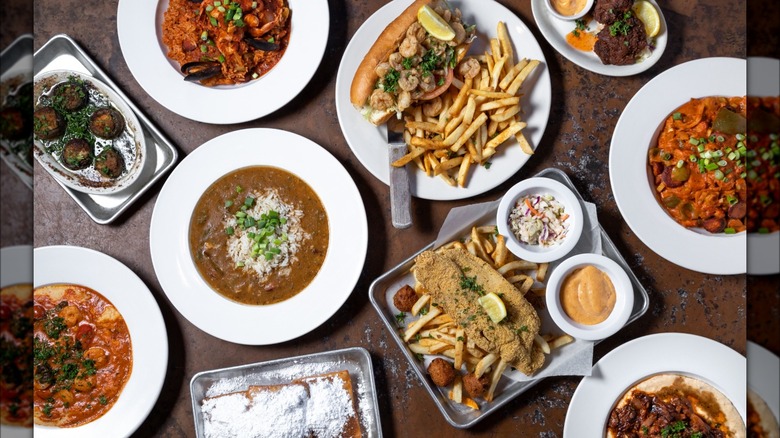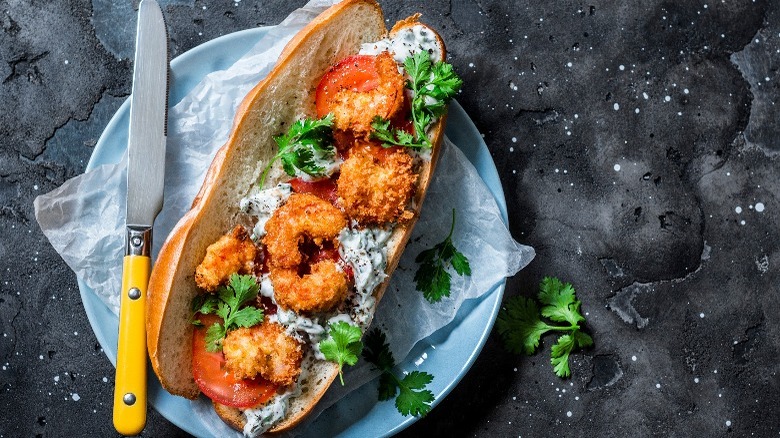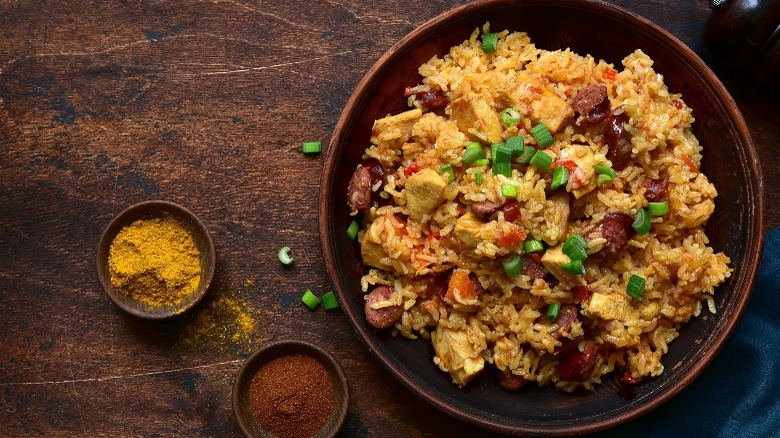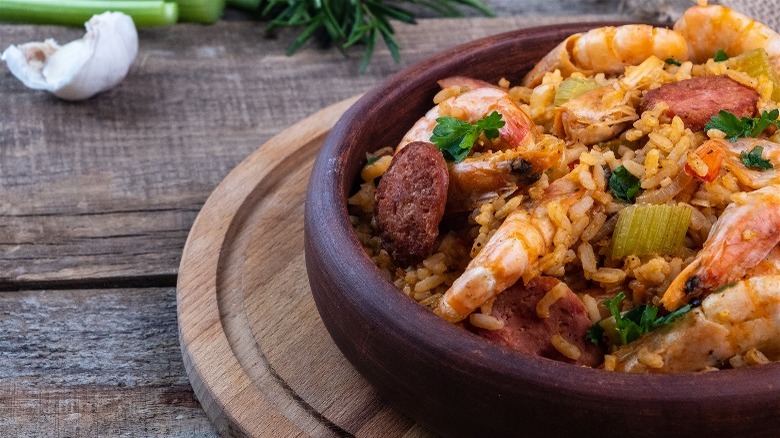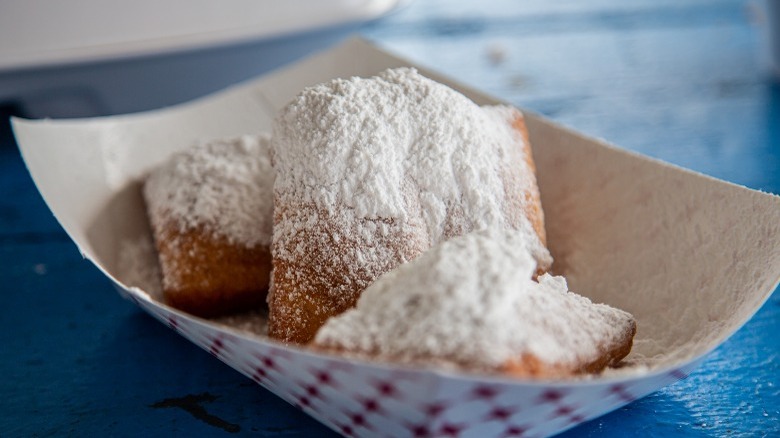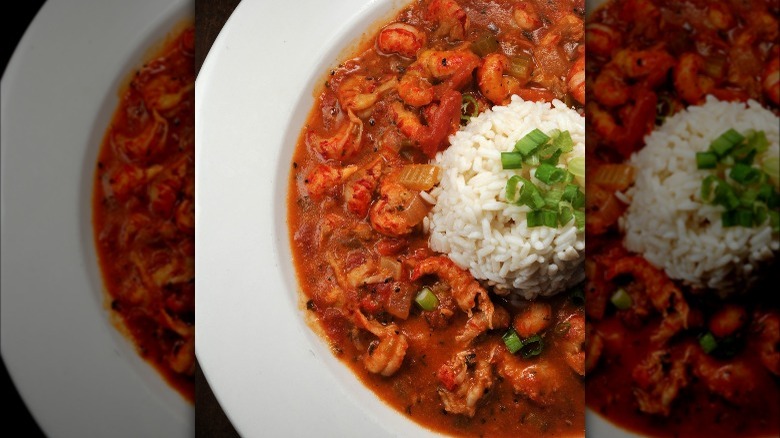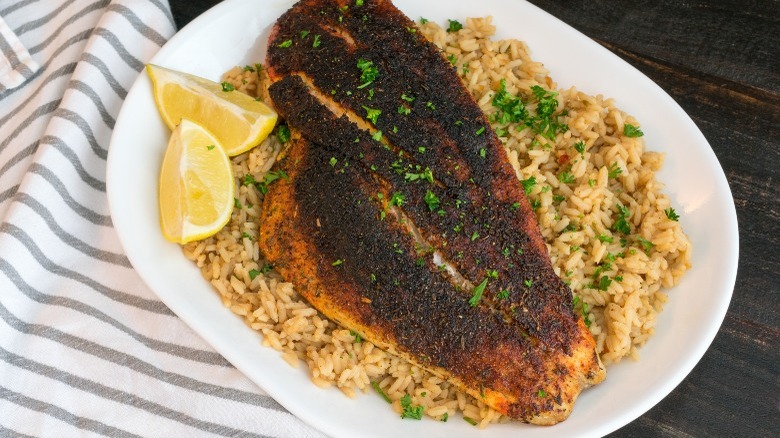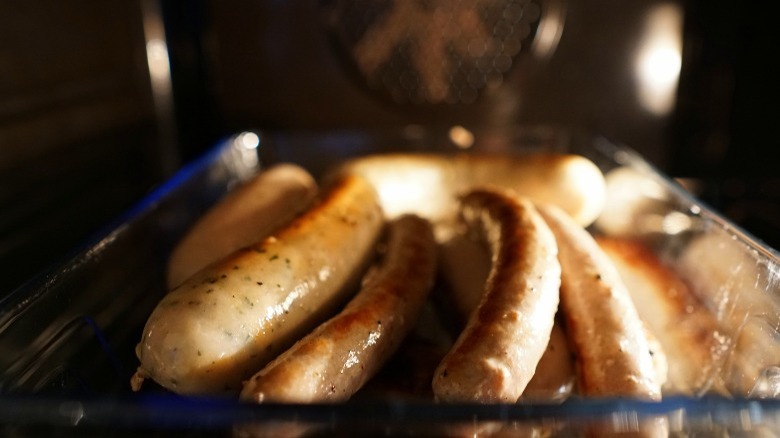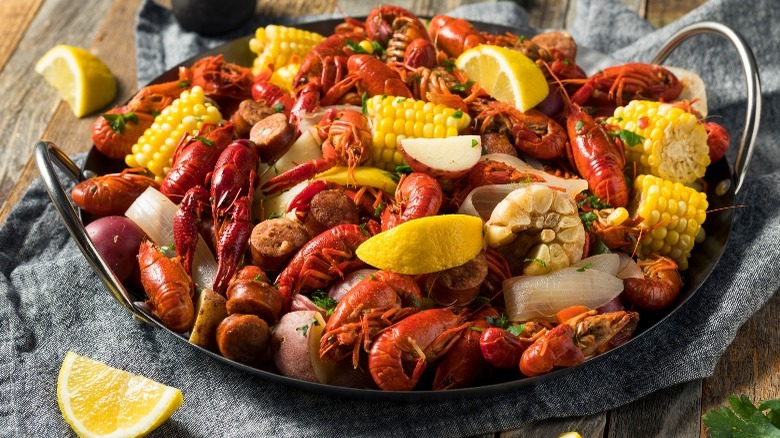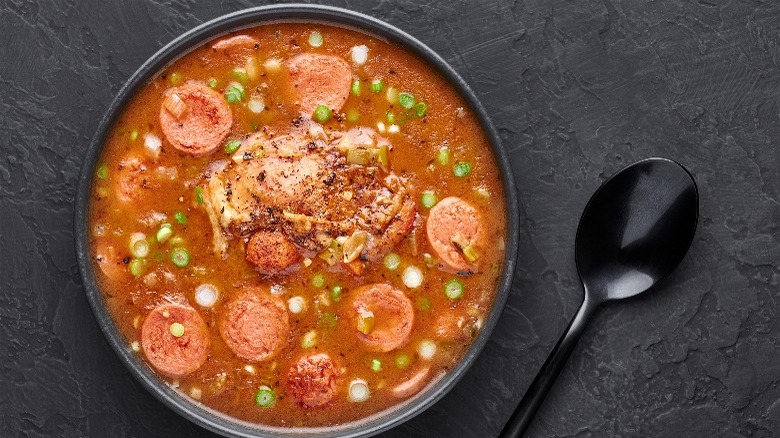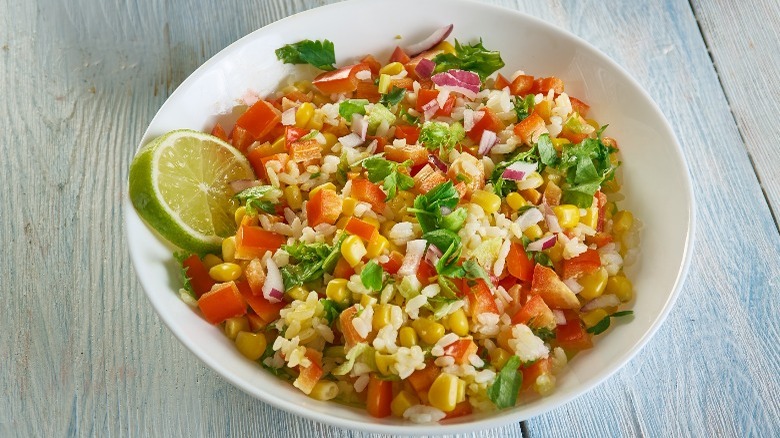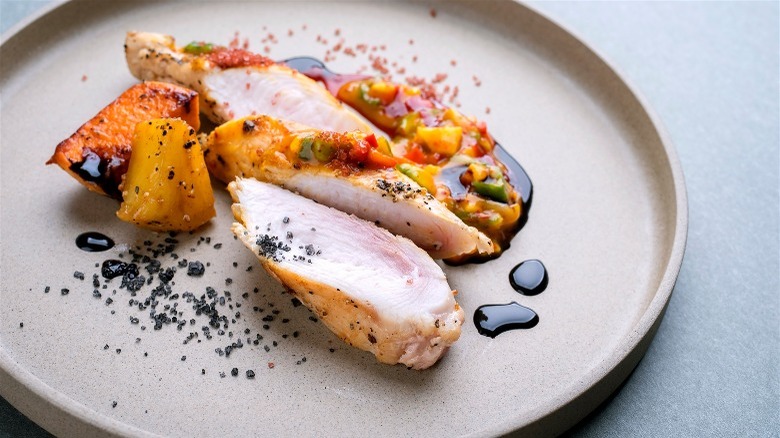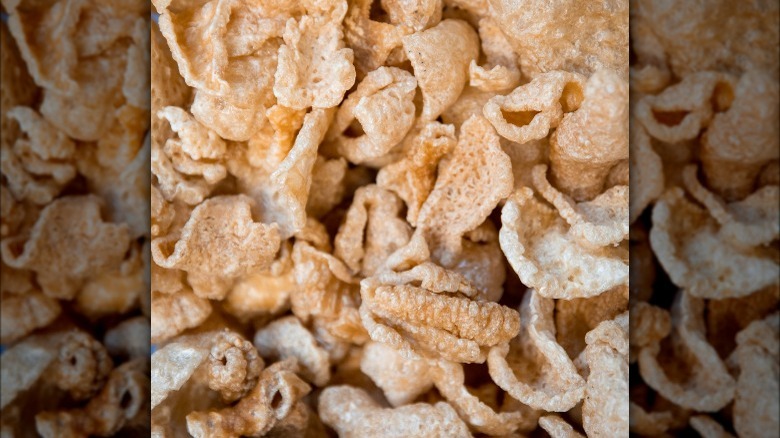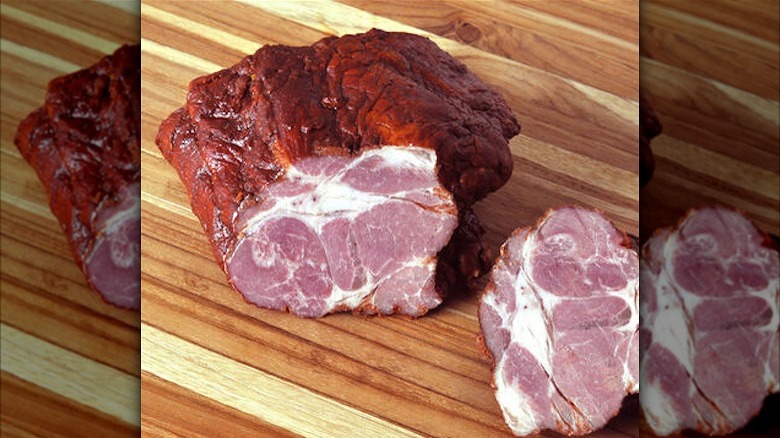Iconic Cajun Foods You Have To Try Before You Die
One taste of Cajun food and you know you're eating something special. Cajun food is an amalgamation of culture and history with dynamic flavors to match. According to the official New Orleans website, Cajun food and culture derive from the Acadian people, the French who had settled in Canada and then made their way down to New Orleans.
Cajun cuisine often draws on the land and leverages smoked meats, rice, and sausage. The food traditionally used what was local, which is why you might spot some unique proteins and food preparations on a Cajun menu. (Creole food, if you were wondering, is often tomato-based). And no self-respecting Cajun meal can start without the holy trinity, which is the Cajun name for diced green peppers, celery, and onions.
If you've been fortunate enough to visit New Orleans, you may already have an idea of just how special the cuisine is. New Orleans is the official heart of Cajun cooking. Keep reading to see which iconic Cajun dishes made the countdown list — and get ready to whet your appetite!
Po'boy
This New Orleans sandwich is as delicious as it is famous. It's the Po'boy and it is made of fresh French bread stuffed with a protein, usually of the fried seafood variety. Fried shrimp is common, as is fried crawfish, fish, roast beef, or oysters.
New Orlean's lore has a few versions of the po'boy origin story, but according to FrenchQuarter.com, there's one that most hold as true. As history tells it, Clovis and Benjamin Martin owned a casual restaurant on St. Claude Avenue. On July 1, 1929, New Orleans streetcar drivers went on strike to protest working conditions. This strike lasted 4 months, according to the Zinn Education Project. Now, the Martin brothers were former streetcar drivers, so they knew the conditions and wanted to support the strikers as best they could. They offered free sandwiches and referred to the strikers as the "poor boys."
While everyone has their own version of a po'boy sandwich, it's one of those foods that starts at delicious and only improves from there.
Andouille
In the world of sausage, Andouille is notable for its heat and versatility. You may have spotted Andouille sausage in a few of New Orleans' signature dishes like gumbo and jambalaya. Andouille is the smoky base to those dishes, and its flavor is nearly unmistakeable once you've tried it. The sausage is often made with pork butt that is flavored with garlic, pepper, and wine. The sausage is smoked twice — first just the filling, and then the whole sausage.
While it's believed that the Germans brought sausage to the area, over time it blended with the Black American and French influences of Louisiana to create Andouille sausage, explains The Tennessean. Depending on who makes the Andouille, there will be different levels of spices and flavorings. So whether you're a fan of heat or want a punch of smokiness, there's an Andouille sausage for you. And according to Chefin, LaPlace in Louisiana makes such good Andouille that it's known as the Andouille capital of the world.
Jambalaya
Rice works with pretty much every type of cuisine under the sun, but when you add fresh seafood, a salty pork component, some aromatic vegetables, and more, you have a hearty, warming dish that's one of the keystones of Cajun cuisine. Jambalaya is the Cajun version of West African joloff or Spanish Paella. McCormick explains that there was no saffron in 1700s Louisiana, so there was no possibility to make paella. Instead, locals made the next best dish they could create. Little did they know it'd be a classic dish consumed centuries later.
According to What's Cooking America, jambalaya should not be stirred. The one-pot dish should instead be turned to keep the rice intact. It is an extremely versatile dish that's served at all kinds of celebratory affairs. While there may be a standard set of ingredients, jambalaya is often made with what you have on hand. There are tons of renditions of jambalaya, but every dish is made in one pot and made with love. If you've got those things covered, it's practically guaranteed to be delicious.
Beignets
If you've ever bitten into a beignet, then you've already come pretty close to heaven. These fried doughnuts are one of the few sweet specialties to come out of New Orleans' sea of savory dishes.
While Café du Monde is the most famous place to pick up some beignets while in New Orleans, there are plenty of other places to grab them. According to the Café du Monde website, a beignet is a fried square-shaped fritter that is covered in powdered sugar. They have a nice delicate crunch on the outside and are soft and chewy on the inside. They're often topped powdered sugar but somehow aren't overly sweet. Beignets are made with a choux pastry, and although they can sometimes be eaten in savory preparations without powdered sugar, they're most likely eaten as a dessert.
Based on their name, it's no surprise that beignets are of French origin. According to Joe Gambino's Bakery, beignets date back to the 16th century when they were quite popular in France. French nuns may have brought the recipe to New Orleans. You can pay homage to history and grab a bite of these delicious treats while in New Orleans, or make them yourself if you've got some pastry skills!
Shrimp etoufee
If you had to describe etouffee in one word, it'd be nearly impossible. That's because etouffee is complex in concept and layered in taste. It is a stew, yes, but it's often eaten with rice and made with seafood along with rich Cajun flavors. Etoufee means "smothered" in French, which is perfect to describe this stew that can go with everything from omelets to rice. It's common to eat this with crawfish, but you might also spot etouffee made with crab or shrimp.
Etoufee was first served in the Hebert Hotel in the 1920s, using all parts of the crawfish — like the tails and fat — along with some pepper and onions. A family friend of the hotel-owning Heberts family adapted the recipe and it took off, according to CajunCrawfish.com.
But how exactly is etouffee made? Louisiana Travel's recipe suggests making a roux from butter and flour, and then adding your aromatics, broth, seasoning, and seafood, then serving over rice.
Blackened fish
Blackened fish is a Cajun favorite that delivers on flavor. That's because blackened fish is first coated in spice and then literally cooked to the point of nearly burning. According to Cooking Light, there's no right spice mix to use as a blackened fish coating. So you can adjust the heat and flavor to your liking.
Compared to some other Cajun staples, blackening is a relatively modern development. It is credited to Paul Prudhomme, a chef who got his start at the famed New Orleans restaurant Commander's Palace. As Alabama Gulf Seafood tells it, Prudhomme already had a knack for creating mouth-watering recipes. But when he opened his own restaurant K-Paul's Louisiana Kitchen and perfected his blackening technique, the desire for Cajun cuisine skyrocketed. This was the spring of 1980 and before then, Cajun food wasn't known outside of New Orleans like it is today.
If you'd like to see the technique that took the culinary world by storm, you can always prepare it yourself.
Boudin sausage
If you're enjoying some authentic Cajun cuisine, there's a good chance you'll spot some boudin on your plate. Interestingly, this sausage is actually not sausage at all, according to real Cajun aficionados.
Cajun Food Tours describes boudin as pork, spices, onions, and pepper concoction that's cooked with rice and then cased. The main thing that sets it apart from sausage is that sausage is often cased with raw meat, while boudin is cooked before it's stuffed into a casing.
Boudin was brought to Louisiana by the Acadians from Canada. A written record of boudin goes back to 1805, so not only is this delicacy delicious, it's historic! My New Orleans even explains that several types of boudin are still eaten in France, but they are rather different from the Cajun version. And while every boudin will have its own consistency, spice blend, and casing type, you can always count on them to be quintessential Cajun food!
Crawfish boil
A good crawfish boil requires a few key components. You will need more than enough crawfish, large pots, some veggies, and of course the seasoning. But a crawfish boil is more than just a pot of seafood. It's as much of an event as it is a dish, and its cultural and historical importance is one that Louisiana holds closely.
The tradition dates back to the 1800s when Acadians, former French Canadians who settled in Louisiana, adapted recipes meant for more expensive forms of seafood, Jefferson Chamber explains. They might not be able to afford shrimp or lobster, but with the right seasoning, they could make the local crawfish taste pretty darn good. As the dish turned up in more and more restaurants, the seafood and its signature dish were cemented as Cajun staples. Plenty of brands make a seasoning called Crawfish Boil that is specifically for the dish. With that, it's quite easy to set the stage for a memorable spring or summer meal.
Gumbo
Gumbo was first referenced in the early 19th century, reports Southern Foodways. Although similar to jambalaya, gumbo is served over rice, not cooked with it. Today, it's common to put seafood, chicken, or sausage into a gumbo, but a 1901 cookbook called The Picayune's Creole Cookbook suggested such varied proteins as squirrel, veal, and rabbit! There seem to be two categories of gumbos — those thickened with okra, and those that use a filé.
Gumbo's roots run deep and its name comes from a West African language. It has some commonly used components such as filé, which is a powder made of ground Sassafrass leaves that was first used by the local native American tribe called the Choctaws. There's one more school of thought that believes a dark roux is the best way to thicken a gumbo. Whichever method you decide to believe in, gumbo is nearly irresistible and gives a true feel for just how dynamic Cajun food can be.
Maque choux
Cajun cuisine is often heavy food that can warm the soul on the chilliest of days. The dishes are varied, but there is plenty of meat and dough as well as rich spices! So it's only right that a vegetable dish provides some relief for the vegetarians of the bunch.
Maque choux is a chopped vegetable mixture that is served as a side dish at many Cajun kitchens. Shreveport Times explains that the recipe's main ingredients have not changed much over the years. The dish contains corn, bell peppers (either green or red), onions, tomatoes, garlic, and celery, all evenly diced.
While its history is unclear, some historians believe the dish was developed by enslaved and indigenous people and later integrated into Cajun cooking. Some chefs serve it mixed with rice or on top of rice and for an easy interpretation of the meal that serves as dinner, some people even add in chicken or shrimp.
Alligator
While most people wouldn't willingly get close to alligators, Cajun chefs seem to have no problem with it... as long as it's on a plate. Louisiana Sportsman explains that in Louisiana, the alligator has been a topic of interest since around 1699 when it first appeared in print. And it's believed to have even older roots, with some Indigenous tribes enjoying the meat before then, reports the New York Times.
If you're hesitant about eating alligator, it is said to be really similar to chicken. It's a little wilder-tasting, but it's often served in the same way — fried, stewed, and even grilled. And if you're actually buying alligator, you'll want to aim for the tail meat, as it's the best quality meat, says Nola.com. Alligators were endangered from overhunting until their population was replenished in the 1980s. Today, there are plenty of alligator farms, many of which use the whole alligator for meat and the animal's hide.
Gratons/cracklins
Centuries ago, when a pig was butchered, the community prioritized utilizing the whole animal. As Nola.com tells it, this event was called a boucherie. Nowadays, it is described as "part feast and part educational tool," as well as "a ritual of remembrance to reconnect with regional traditions." Back then, however, it was done during the winter to produce enough food to provide many meals. The pork was set aside for traditional Cajun dishes. And of course, there was no way they could waste the pork skin.
Fry up some pigskin, which goes by the name Grattons or cracklins, and sprinkle the finished product with some seasoning for a delicious Cajun treat. It's easy to confuse cracklins with pork rinds, but as My New Orleans tells it, cracklins often include a piece of meat. It's more similar to Chicharrónes, which are popular in Latin American cuisines. This snack is tasty, salty, and hard to stop eating!
Tasso Ham
In Louisiana, ham is enjoyed in stews, with beans and rice, in gumbo, jambalaya and so much more. Tasso ham is one of Cajun cuisine's best interpretations of salty pork. And according to Taste Atlas, this cured meat is actually made from pork shoulder. So while technically not a ham, it's cured — so it's got a lot of the same salty qualities.
It's not clear where tasso ham got its name, but one thought is from the word "tasajo," which is Spanish for "jerky." This meat is a Louisiana specialty, and it brings just the right amount of flavor to all of the typical Cajun dishes. As Taste of Home puts it, you don't enjoy tasso quite in the same way as ham, so don't expect to see it as a ham and cheese sandwich. Instead, it's a meat that's rendered down and used to give richness to other dishes like ham and bean soup, collard greens, or shrimp and grits.
